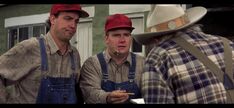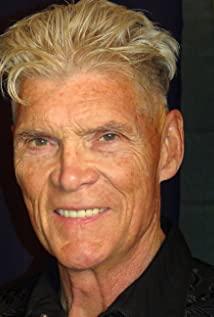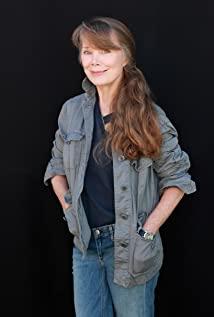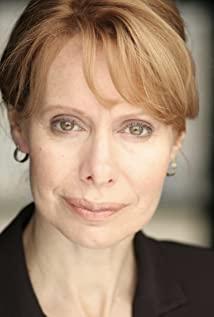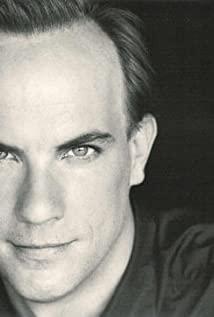The film that American director David Lynch is better known for must not be this "Mr. Streeter's Story." Compared with films such as Mulholland Drive, The Elephant Man, and Blue Velvet, which focus on distorted erotic desires and dreams, this film is extraordinarily fresh, simple and warm. In this film, you can hardly find the usual elements in his other films, so that I once doubted whether this film was really his work, and this shows David Lynch's directing skills, he has Skilled enough to make films with completely different genres and styles.
As a director preparation student (self-proclaimed), the following is my drawing notes for this film (if I brush it later, I will continue to add it).
First of all, the processing at the beginning of the film is simple and appropriate. At the beginning of the film, accompanied by the melodious music, the slow camera sweeps across a yellow field of crops, a harvester blows thick smoke over the wheat field; a small town comes into view, and a farmer's car drives unhurriedly with wood. Crossing the block, several dogs barked across the road; the music continued, and the camera cut to the courtyard lawn, a chubby woman was lying on a bench basking in the sun, and a thin woman next door pulled a shopping cart and pushed out the door. After they greeted briefly, the thin woman left. Meanwhile, the music fades away as the overhead shot flattens out. Such a beginning is definitely not complicated, on the contrary, minimalist, but the key to empathy is "appropriateness". The quiet and peaceful atmosphere of the American countryside created at the beginning of this paragraph matches the overall warm and sultry style of the film, and the creation at the beginning undoubtedly sets the tone for it. I will call the use of these lenses "line drawing", which is simple but has the power to touch people's hearts.
After the music disappeared, there was the faint sound of insects, reflecting the quietness of the courtyard. The slow long shot continued to advance, and the fat lady Dorothy on the bench got up and went into the room with a dinner plate. The camera followed, and after Dorothy disappeared, she smoothly turned to the house on the other side (the protagonist's house) until she pushed A close-up of the window, at which point we hear someone in the house fall through the voice-over, although we can't see what's going on inside the window. Immediately afterwards, there was a black scene. The director was not in a hurry to reveal what happened, and the screen cut back to Dorothy. She returned to the bench with her plate and continued to enjoy the food while lying on the bench. This is a well worth learning scene scheduling, simple and direct, yet suspenseful; it is also a very unique way for the protagonist to appear. Through the subsequent plot, we learned that the aged protagonist actually fell to the ground at home, and could not stand up by himself - this is the protagonist's first appearance in the film, which is extremely important for the shaping of the characters . Obviously, the director has carefully conceived and completed the image construction of an old man in his old age through sound and pictures.
The scene where the protagonist, Street, learns that his brother Ryle has had a stroke is also worth learning from, especially the handling of light and shadow. On the night of the storm, Street and her daughter were sitting side by side by the window, the phone outside the picture suddenly rang, and the daughter got up and went to the next door to answer the phone, while the camera still fell in front of Street (this time a fixed long shot). At this time, the voiceover is the voice of the daughter answering the phone. When it is learned from the daughter's dialogue that Ryle has suffered a stroke, the camera is pushed to a close-up of Street's face. His expression instantly becomes extraordinarily sad, although he has not yet cried , but in fact his heart has already burst into tears - in the processing of light and shadow, the director casts the shadow of the rain down the glass on Streit, and the shadow of the rain that flows down is the externalization of Streit's sad heart at the moment . And such light and shadow processing, combined with the heavy music melody, is even more appropriate, restrained and powerful than the protagonist's direct tears or pain.
Another lighting treatment that impressed me was the scene where Streeter told his daughter that he was going to visit his brother Ryle alone on the road. It was the same night, and daughter Ruth was immersed in sad memories, and her room was dimly lit. Father Street appeared at the door of the room, with orange light behind him, the father told his daughter his decision to go on the road, although the daughter was worried about whether it was feasible, but obviously the father had made a decision, he leaned on crutches in both hands, turned around He staggered toward the light source. "Light" represents hope, light or a new journey, so the use of light and shadow here is self-evident.
The account of her daughter Ruth's sad past is particularly refined in the film. When the father on the road told a girl who ran away from home about the sad story of his daughter, the director used only four pictures. Two of these four pictures are empty shots, and the other two are the state of the daughter. And through the communication of these four pictures, we seem to see the "fire" that happened to the daughter and the more complex emotional fetters. What this flashback inspired me is that, in some cases, the director can choose not to do the time-consuming and laborious restoration of the recall scene, and it can also achieve or even better express the plot or convey the emotion. But simplicity is not easy. Behind this is the director's ingenious creative thinking.
The restrained and accurate ending of the film once again confirms David Lynch's excellent directing ability. As a road movie in a sense, most of the film takes place on the road. Although Street's purpose on the road is to visit his brother Ryle, the film focuses on Street's mental journey—his life memories and emotional returns. So, we followed Street's slow-moving grass shovel over the mountains and mountains, meeting people one after another on the road with him, and getting closer to his life course step by step: his rebellion against his family and his return (corresponding to running away from home) the girl), his views on the young and old (for young cyclists), his transition from manic tangle to peace and relief (for a middle-aged woman who hits a deer and becomes extremely manic), his return to brotherhood and Treasure (corresponding to the bickering twin brother and the priest). At the end of the film, when Street finally came to his brother Ryle's house, the remaining time of the film was not much, but it was enough for the director to receive a powerful and meaningful "leopard tail": Street finally met his brother Ryle. Er, and the two old men stared at each other for a long time without saying a word. Brother Ryle looked at the grass shovel driven by Street and said, "You just drive this shit to see me." Full of tears. The camera switched back and forth between the two of them quietly, and Street and his brother raised their heads in unison, looking at the sky, the starry night sky, and the film ended here. Such a restrained and simple ending makes the viewers feel the eternal and deep friendship between brothers, triggering thoughts on life and love.
In fact, the bright stars in the night sky appeared many times in the film, and formed the echoes of the beginning and end of the film, corresponding to what the protagonist Street said: "What turned us against each other is no longer important. I want to be reconciled with him as before. , I want to sit side by side with him and watch the stars, like when I was a child", which also points to the theme of the film: life, love and eternity.
half a month/text
View more about The Straight Story reviews




